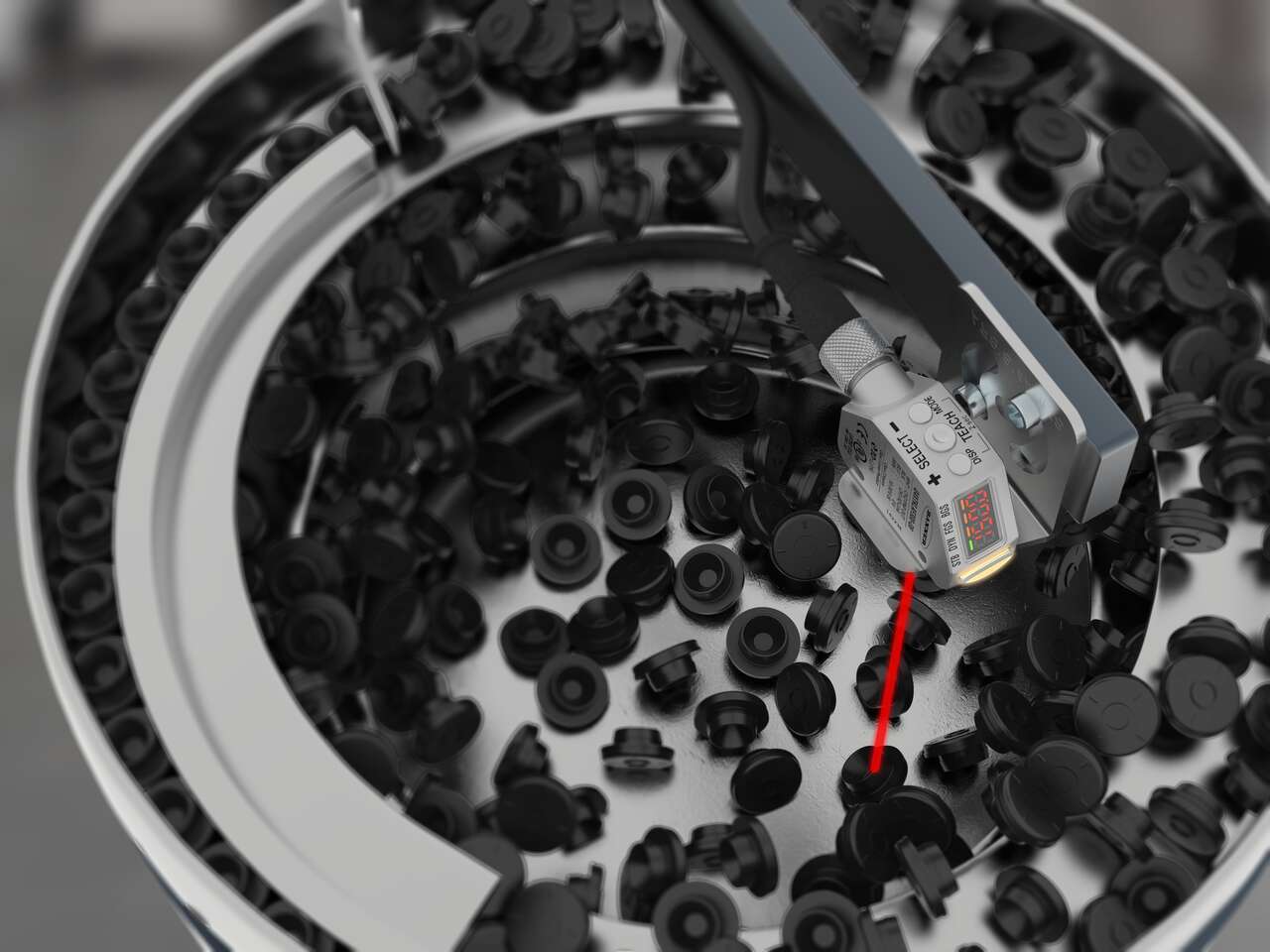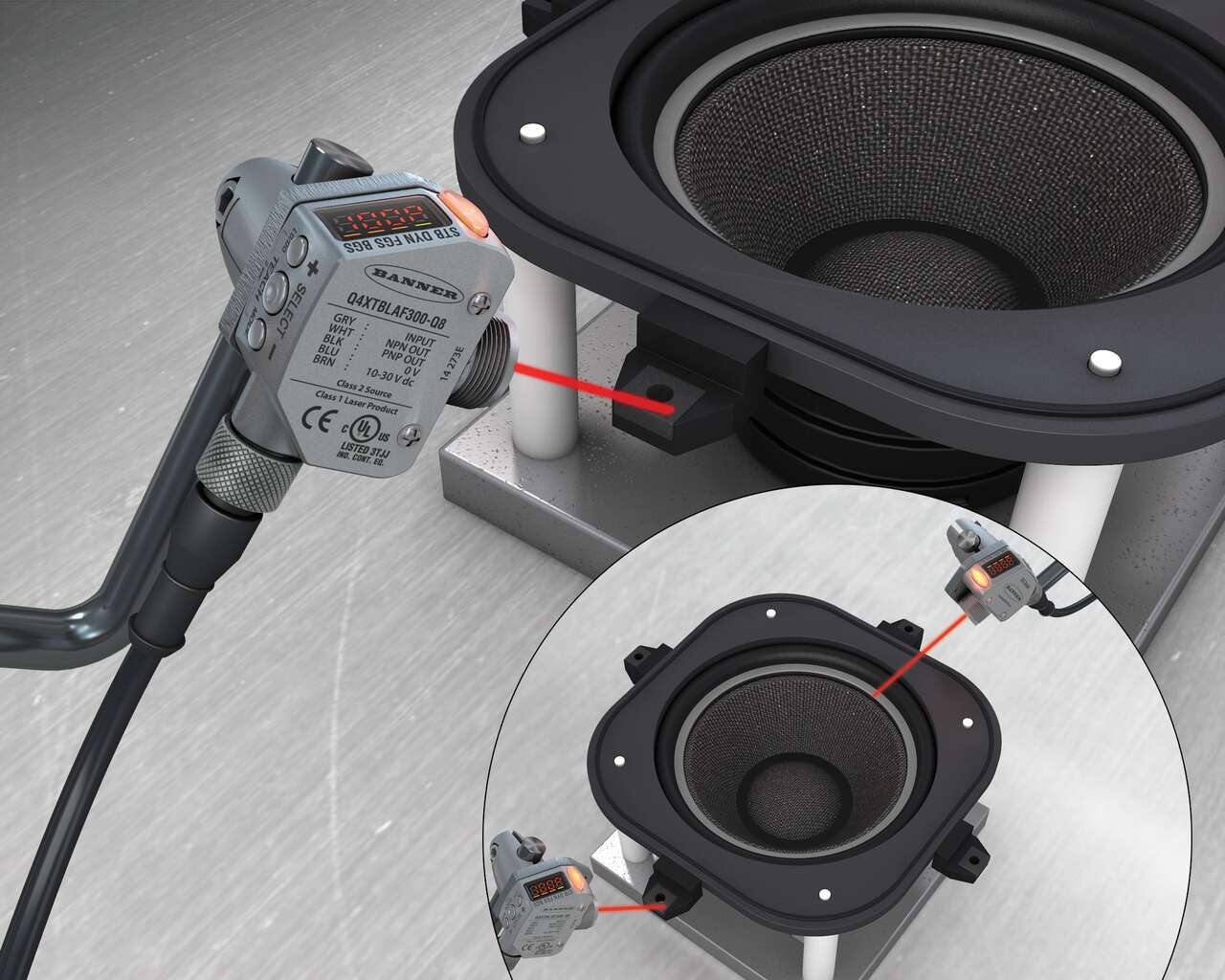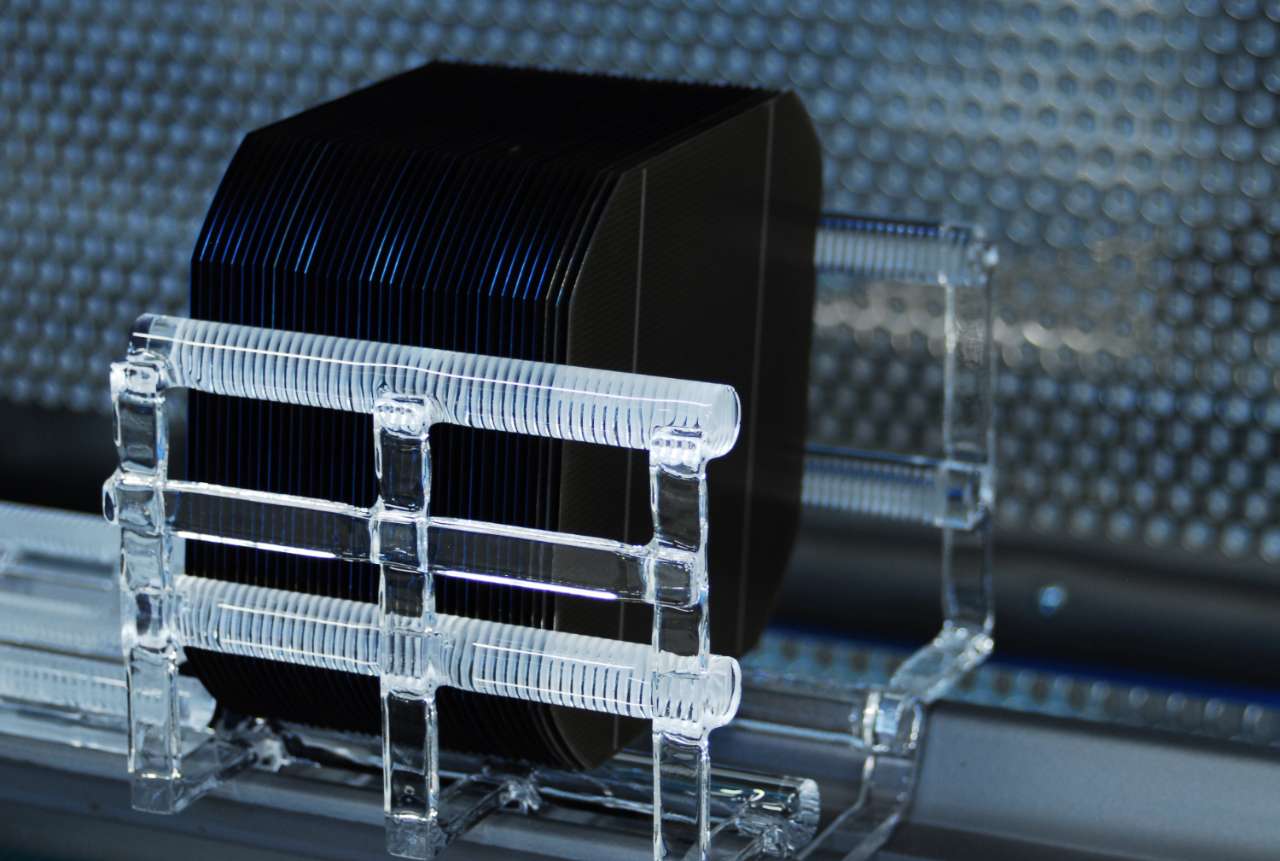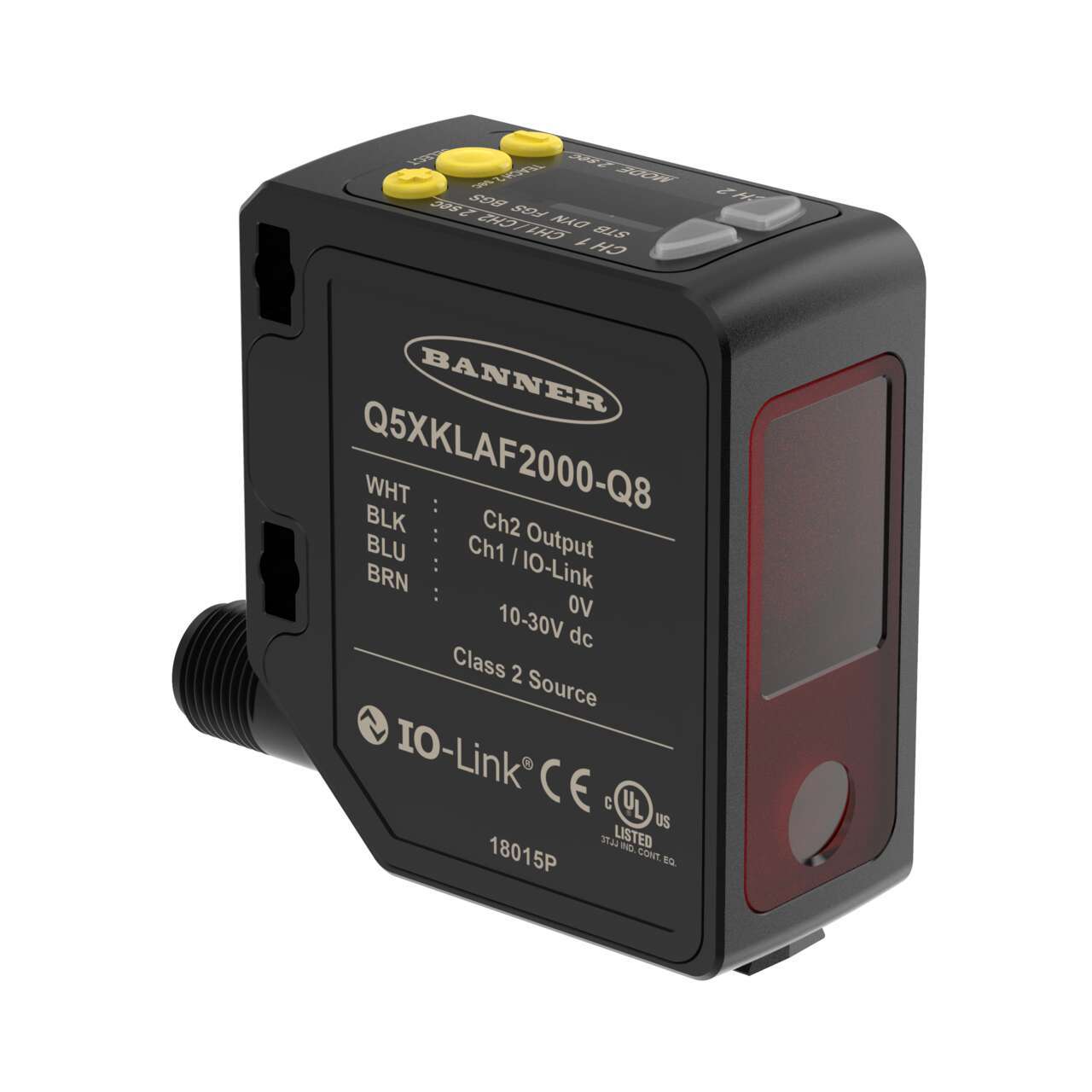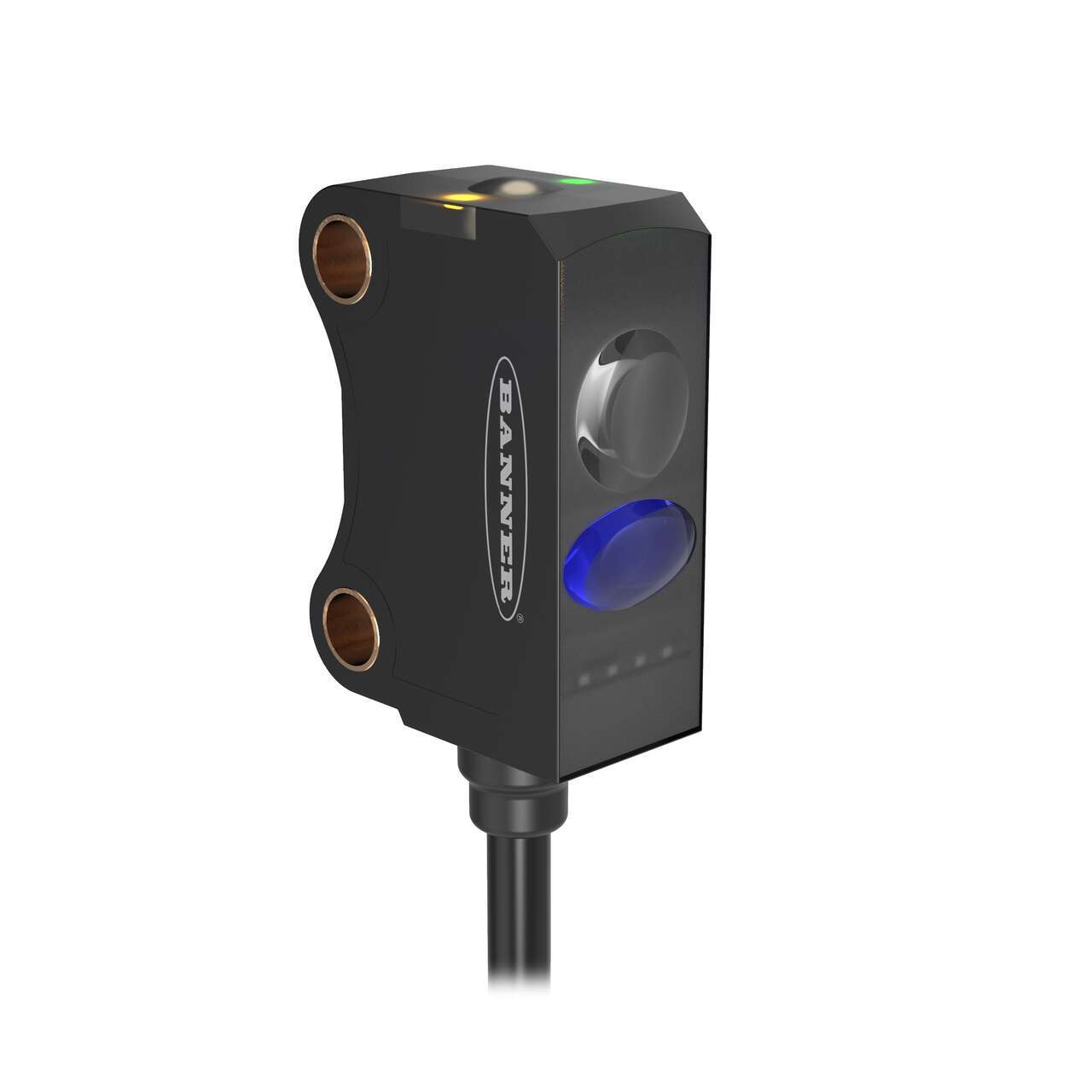检测深色物体的方案有几种。贯通式或反射板式光电传感器显然是一种选择,因为当深色物体行经于发射器和接收器单元之间时,或者当发射器和反射板之间的光束被中断时,传感器可以很容易地检测出来。不过,在许多应用中,将设备安装在应用的两侧不切实际甚至是不可能的。
在这些情况下,需要使用漫反射式传感器(发射器和接收器在同一个外壳内)。 然而,漫反射式传感器依靠目标物作为反射板,而目标物必须将足够的光返回到传感器,用以验证物体存在与否。如果目标物吸收了大部分光线(深色物体就是这样),传感器可能就无法可靠检测出目标物。 为了解决这些挑战,可以使用过剩增益较高的传感器或用蓝光代替红光,来确保可靠的检测。
在许多这样的应用中,传感器不仅必须检测深色物体,还必须在同样深色的背景下进行检测(例如,检测深色的汽车车身面板上的深色零件)。目标物和背景之间缺乏对比,给许多光电传感器进行检测带来了挑战。 对于这些应用,必须使用激光测距传感器。 继续阅读以了解原因。
仅仅依靠对比度的传感器很难检测出类似深色背景下的非常深色的物体;不过这些应用很普遍,特别是在汽车行业。 例如,在右图的应用中,验证汽车门板上有无泡沫和其他部件是极其重要的。 如果缺少任何部件,会对门的最终装配质量产生不利影响。
由于门板通常为深色,例如黑色或灰色,并且用于消除声响并提供刚度的泡沫通常是黑色的,所以标准传感器可能因为对比度欠佳而难以区分泡沫存在与否。 激光测量传感器可以检测距离的变化而不是颜色的变化,来可靠检测这些零件。
一些目标物专门设计为吸收红光。例如,太阳能晶圆设计为尽可能多地吸收阳光,并覆盖有抗反射涂层。这导致传统的光电传感器很难检测出太阳能晶圆。
在这些应用中,配备蓝色LED灯的光电传感器是一种经济高效的解决方案。深色物体吸收蓝光的程度与吸收红光不一样。由于有更多的光被回射到传感器,因此带有蓝光的传感器能更可靠地检测出极其深色的物体。
激光测距传感器,检测范围为9.5厘米至2米
Q5X 背景抑制激光器功能强大,是一款善于解决问题的传感器,内置在经济高效、行业标准矩形外壳。
- 量程为 9.5 厘米(4 英寸)至 2 米(6 英尺 6 英寸)
- 由于过量增益极高,传感器能够可靠检测极暗的物体(反射率 <_6 的黑色物体="的黑色物体" li="li">
- 可靠检测黑色背景下的黑色目标、闪亮金属背景下的黑色目标、透明和反光物体、多色包装以及所有颜色的目标
- 双重示教模式,可测量距离和光强,能解决极具挑战性的应用
配备蓝色LED的光电传感器
- Miniature sensor for installation in the smallest of spaces
- Red laser models provide bright, precise laser light spot for optimum small part detection
- Models with a blue LED reliably detect challenging targets, including dark, reflective, and transparent objects without requiring a reflector
- High switching frequency for detection in even the fastest processes
- User-friendly operation using electronic push button or remote input provides reliable and precise detection
- Red laser, Red LED, and Blue LED types available to match sensing beam to application
- Robust, glass-fiber-reinforced plastic housing
- PNP or NPN output, depending on model
